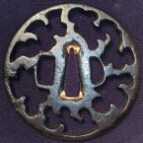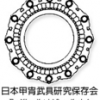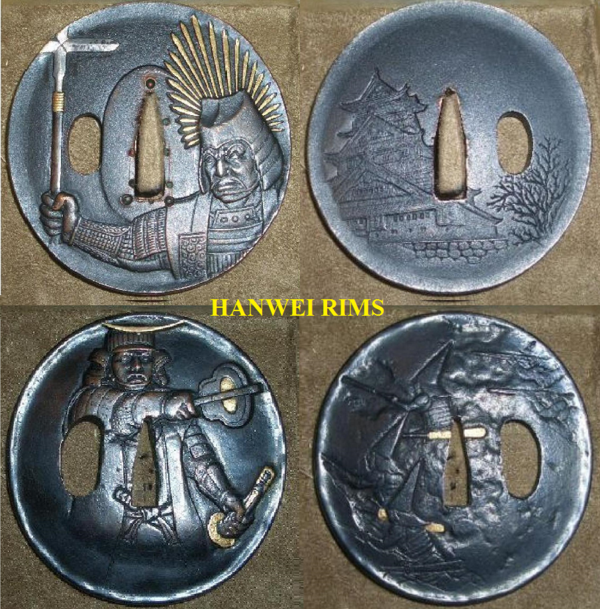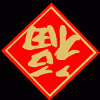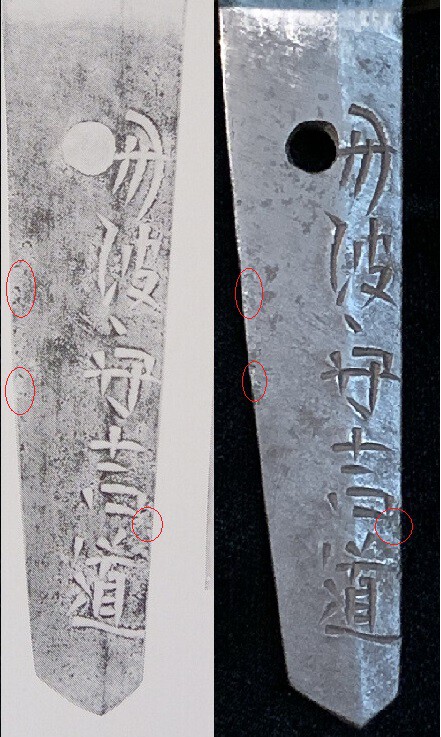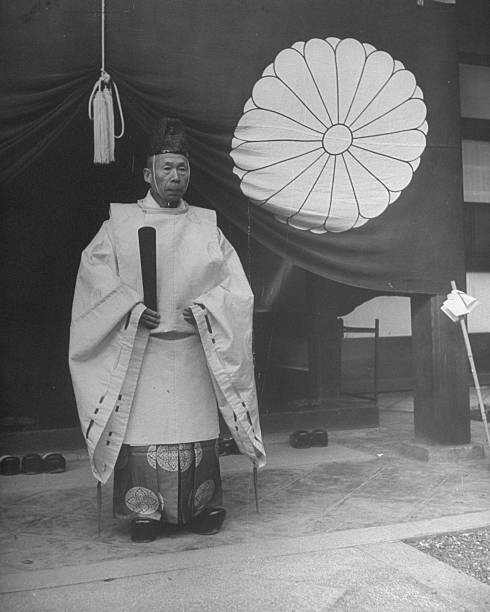Leaderboard
Popular Content
Showing content with the highest reputation on 07/27/2021 in all areas
-
3 points
-
Hello, I'm making some room in the collection so I thought I would offer this up for grabs. It comes with the sword registration from Japan. Saya is signed Ikkanshi Tadatsuna Saku. Very nice crystallization shown in the hamon. There are a few very small forge marks but other than that the cutting edge is amazing and the tip is still needle point sharp. Please DM for more pics for serious inquires only. Nagasa: 50.3 cm. Sori: 1.1 cm. Moto-haba: 3.0 cm. Saki-haba: 2.4 cm. Moto-gasane: 0.6 cm. Saki-gasane: 0.5 cm. $2500 US shipped with tracking additional shipping if you live outside the US or Canada.2 points
-
Eric As George read “Mino ju Kaneyoshi saku” and this one is Matsubara Shozo Kaneyoshi. Born Taisho 10 (1921 Jan 20). He was a student of Watanabe Kanenaga and the younger brother of Nakata Kanehide. He later became a Naval swordsmith. Summary and examples in Naval Swordsmiths Part 2, in the NMB Downloads. With a Sho/sakura stamp is an early war Showato.2 points
-
Hi Arnold, You say you want to buy an original sword; if so, you need to buy only from a dealer you can trust 100% or you need to study first (and, shy of getting lucky, those are the only options you have). The fact that you are asking about such an obvious fake tells us you are a beginner. There is nothing wrong with that; we all have been there ourselves, but as a beginner you need either very good advise or a whole lot more knowledge than you currently possess. Otherwise you will run out of money quite quickly. Grey2 points
-
Item No. 85: the subject is possibly 近江八景 - Ōmi hakkei, i.e. Eight Views of Ōmi. According to tradition, Regent Konoe Masaie and his son Hisamichi, while visiting Ōmi province near Kyōto, wrote eight waka poems describing famous scenes around the western shore of Lake Biwa. BTW, item No. 84 was assigned as ko-Shōami by a kanteisho? I'd rather say Heianjō-zōgan...2 points
-
7. With the beams in I decided to start in on the lighting. I used Hampton Bay mini tracks for this project. Here is what it looked like as I was installing: 8. Lights - check! Time to install the J brackets for the sword shelves. Or in this case level: B-A-L-A-N-C-E...balance (Can you guess the movie?). 9. With the brackets in - it was then time to install the beams. I used 2x4x8 stained in Kona.2 points
-
2 points
-
kanmuri-otoshi. Very similar to unokubi zukuri in that it tapers towards the mune...but it also has the area to the rear that is a short section like a shinogi zukuri with a groove.1 point
-
The name is Kondō Kiyoshi (近藤精), living at what looks like Seto-kō #3518, in Setozaki-mura. As I say, this city was rolled up into Imabari city, and so the old addresses don't exist anymore. But the location would be somewhere around here https://www.google.com/maps/place/日本、〒794-1404+愛媛県今治市上浦町瀬戸2198/@34.22584,133.0463853,17z/data=!3m1!4b1!4m13!1m7!3m6!1s0x355048b4fd728ec9:0xcdee38840ee8a22!2z5pel5pys44CB44CSNzk0LTE0MDQg5oSb5aqb55yM5LuK5rK75biC5LiK5rWm55S654Cs5oi4!3b1!8m2!3d34.2250669!4d133.0437752!3m4!1s0x35504f302809c823:0x3b4f4750bdd1ba15!8m2!3d34.2258356!4d133.0485741 point
-
Well done Piers and thank you! I would be grateful if you could share some images and lessons learnt from these NBTHK meetings. i am a Life member but alas have never been to an NBTHK meeting or conference in Japan (or anywhere in the world for that matter)! thank you again!1 point
-
Yes, flatten out that tag and give us a good shot of it. I can make out part of an address in Ochi-gun, Setozaki-mura (a place in Ehime Prefecture). The rest of the tag will have the name of the original owner, and maybe pinpoint the address. Edit: I can pick out part of the name. 囗藤精 The 藤 character can be read either as tō or fuji. It depends on what the preceding character is. So that means the family name will be something like 左藤, 斎藤, 伊東 (Satō, Saitō, Itō) or something like that. Or, it could also be 山藤, 高藤, (Yamafuji, Takafuji). The first name is probably is Kiyoshi, but there are multiple possible readings for the 精 kanji when it is used as a name.1 point
-
1 point
-
And #60 on page 9 has similarities to some Echizen ju Kinai pics I have, although none of my examples have the depression in the middle like yours does. But otherwise, thick, smooth plate with deeply incised or stamped floral and plant leaf motifs with some gold inlays for "show".1 point
-
Hard to say anything. Remove the tsuka (handle) and show us the naked sword. The upper part of the picture looks odd. It seems a little blue maybe from heat? But your pictures are not really telling anything. Only that it is a civillian sword with a surrender tag.1 point
-
This is long past due, but I'm new here so have been slowly pouring through this fantastic thread. I'm really enjoying the diversity of your collection Bob, thanks for sharing it. #35 on page 6 is most likely Umetada. Although someone already suggested that, here's some evidence to back it up: This is a quote from Haynes & Long referring to the different branches of the Umetada school: "BANSHU (Harima) branch school: Working here are Muneyoshi, Shigeyoshi, Yoshihisa, Yoshitsugu, and Yoshitada. Some are related to the Kyoto artists of the same name." I have a few examples of Umetada Shigeyoshi tsuba in my images if you're interested.1 point
-
And, if you already haven't checked it out, Ohmura's site is good for killing an hour or two (if you are into WW2 swords). A bit about Seki (in English) if you scroll down. http://ohmura-study.net/211.html1 point
-
Kusunoki Masashige, the big example for the kamikaze pilots, and all who want to die for the emperor. i know the Minatogawa jinja owns an armor, attributed as his, but in fact made in the 16th century. I would be very happy with some good pictures of this armor.1 point
-
Of course the danger is that he was used as a figurehead by militarists up to WWII, so some people will surely be reluctant to nominate him for a Taiga Drama, I am guessing. Also there should probably be a famous and influential woman to round out the story and make it acceptable to a broader audience. The shrine.1 point
-
Welcome Ken. As a new starter myself....... Ditto to what Charles said! Using the search function on the forum reveals a huge store of knowledge, but if you can't find what you're looking for, the members here seem to have infinite patience with answering questions. Like Charles, my experience here is limited, but when I've asked for opinions, I've had lots of differing ones which is really useful to get different views - it's great for learning Cheers, Jon1 point
-
Be sure to bring us some photos when it's done. Before & after! It's a great feeling to hold one of these after they've been restored as much as possible. Something sad about a gunto with missing parts, or dilapidated condition.1 point
-
Not related to real estate at all, rather low numbers of registered examples that can be legally owned.1 point
-
Very nice James! The lights should be LED. Dimmable would be perfect, so you have the possibility to create some asthmosphere and lower the “impact” to the pieces…1 point
-
And don't forget the articles on this forum, lots of good information to help spot fakes.1 point
-
im of the opinion there prices are a reflection of there high realestate prices ?? as a cost of buisness;s it must be past on???hmmm?1 point
-
And yes, the sword does yell “I’m a fake” (glancing again, I see the lack of yokote, the “same” ( 😬 ), the tzukamaki, etc. etc. ), and people’s time is limited for commenting. I just know as a fellow beginner, it can be helpful to point out specifics to focus on and think “OH, that is totally fake when I see the real ones side by side.”1 point
-
For Arnold’s (and everyone’s) sake, instead of just saying “it’s an obvious fake, hit the books,” can we please list some things that helped you identify it as a fake? Not all, but here’s what I saw right away: 1. Kanji on the mei was too spread out, on both sides, funkily chiseled (if it even WAS chiseled), and not normally recognizable characters (katakana?) 2. Thought the erotic scene on the kozuka was very out of place, and the figures themselves were too crude. 3. Kogatana’s blade shape was odd; the sori looked almost fantasy-like with the carved-out area. 4. Rust on nakago was an odd color, too bright. 5. Loose/missing seppas 6. seemed like the habaki and blade were off-center through the tsuba There are others certainly, but I think it’s helpful to take an extra few seconds to point out the WHY instead of always pointing towards the books without further context.1 point
-
1 point
-
1 point
-
1 point
-
this is Japanese based auction, so being a machine made blade there rare for them, compared to the west. hence the silly price. PS everyone knows my op on these, just though i would share1 point
-
And another Japanese language monograph courtesy of @k morita. Adachi Kenzō 安立・健三. Nihon Seikōjo to Zuisen Tanto-Sho ni tsuite 日本製鋼所と瑞泉鍛刀所について [About The Japan Steel Works and Zuisen Sword Forge]. KK Nippon Seikōjo Muroran Seisakujo ㈱日本製鋼所室蘭製作所, 1974. 81 pages. Symbol Context, Post #161 point
-
Below is the transcription, reading from right to left, of the book cover shown in Post #16. Any comments or corrections welcomed. Column 1: 講演資料 = kōan shiryō = lecture materials. Column 2: 昭和四十九年九月十四日 = 1974-09-14. Column 3: 第十回刀苑合同研究会 = Dai-jū-kai tōen gōdō kenkyūkai = ??????????. Column 4: 室蘭全国大会 = Muroran zenkoku taikai = Muroran National Convention. Column 5: 日本製鋼所と瑞泉鍛刀所について = Nihon Seikōjo to Zuisen Tanto-Sho ni tsuite = About The Japan Steel Works and Zuisen Sword Forge. Column 6: ㈱日本製鋼所室蘭製作所 = KK Nihon Seikōjo Muroran Seisakujo = The Muroran Factory of Japan Steel Works Co., Ltd. Column 7: 総務部長代理 安立・健三 = Sōmu buchō dairi Adachi Kenzō = Deputy Chief of General Affairs Department Adachi Kenzō.1 point
-
1 point
-
1 point
-
To get the ball rolling, there are four rows of kanji characters on the back. The second row is repeated on the front which also has the police emblem at the top and firefighting emblem at the bottom. This is what I have trancribed so far. 1st row: 梨本総裁宮殿下 = Nashimoto sōsai kyūden-ka. 2nd row: 御檢閲記念 = O ken'etsu kinen. 3rd row: 昭和十二年四月十一日 = 1937-04-11. 4th row: 岡山縣 = Okayama-ken. As for what the characters are referring to, I will leave that to someone else. However, I think the reference to Nashimoto could be to 梨本宮守正王.1 point
-
Hello from Maryland USA! To each of you that share your info/knowledge ofNihonto and Japanese culture I say thank you in advance. My interest is high but I don’t have much experience in the subject so I’ll refrain from commenting. I’ve got a lot of reading on this message board but I’m totally looking forward to it. Hopefully no one finds my ignorance too irritating if I ask questions!!!1 point
-
Hi Larry this is a showa-to non traditional blade in a civillian Koshirae. My best guess it was used for iato or cutting around. $3000 is astronomical for this sword. Run away from this sword and spare your money.1 point
-
Anyone else new to Nihonto (live on the forum, or still lurking!): Thirty quid is a really good price for one of the "must have" new-starter books. I bought one just a few weeks ago and the best price I could get mine for was £38 plus postage. Even if you're not going to buy a blade but are interested in the discussions on NMB , its a really good reference book. Note 1: I have no connection with the seller, other than having just bought a couple of books off him. Note 2: I am feeling very smug and righteous, having actually provided some (possibly) helpful advice on NMB ............ small steps! Cheers, Jon1 point
-
I don't mind the two large 'replicas' they are well done and if you can't afford the real thing, they are good talking pieces. Now this one I have seen copied and copied over and over till it gets so bad you can't make out what it started out as - I think it could be Japanese stealing back the design from Paul Chen [Hanwei] who had a collection of famous identities made as guards - they were copied almost immediately by other Chinese factories and I think ironically very well by the Japanese. The "original" Hanwei had a distinctive rim that no one else has been able to replicate correctly. Amazing !! Even modern designs are being faked, nothing is safe !!1 point
-
i seem to remember reading something some years back that was a discussion of the origin of sword smithing in Japan in connection with the Ainu. I can't quote a source, but I seem to recall that some early big names were theorized as being of Ainu descent. Anyone remember something like this? Thanks for sharing, Peter1 point
-
Chris, Thanks for your interest. Indeed, these are "primitives". Most are utilitarian Japanese blades - carpenters knives and things like that were fitted out by local carvers up in Hokkaido. There are basically three (3!) types of blades. 1) belt knives - called MAKIRI - that every guy carried I bet. They have trade knive blades and were certainly tools, not weapons. Then there were "Wood knives" which were like machete for use in forestry. Some of those look like they may have laminated blades but they do NOT look like either Nippon-to or Japanese folk tools. Then there were "Swords" - these included either locally produced hirazukuri short swords (no hamon but locally produced engravings etc} OR recycled Japanese sword blades --- all of which look like tired and abused old beat up Nippon-to -- mounted in locally produced , carved wooded, mounts. Clearly, Japan was awash in old sword blades and many of them seem to have traveled up to the "primitive" communities in the north. I have seen "Ezo" fittings - IN BOOKS!.They are rare!. The pieces that are actually out there to be discovered are universally beat up old Japanese blades or no collectible value - except as "ethnographic art. It seems that folks up in Hokkaido - call'em Ainu - did make iron blades by the Edo period, but most of which there is to be discovered are late 19th to early 20th century tools build of Japanese hardware. Again, thanks for looking! Peter1 point
-
Item No. 80 - Iron tsuba with shibuichi and gold - 8.05 cm x 7.38 cm x 0.38 cm Subject of pine tree , stream and moon , made approx. ten years ago by Ford Hallam A strong , stately pine tree partially depicted with branches and needles . The plugs shaded to represent the moon , reflected in the calmly flowing water . Overall a contemplative piece , with a quiet , soothing feel that evokes a similar response from the viewer , especially when held in hand. This tsuba was the first entered into the annual NBSK competition to win gold for a non-Japanese maker.1 point
-
Another interesting video that I have not seen in the selection, probably very well known, but for people who have missed it.1 point
-
1 point
-
That is a fantastic menuki! Out of interest, can we get dimensions and a pic of the back?1 point
-
1 point
-
Hi Leen. I'm glad you are interested in Japanese swordsmith. The descendants of Mizuno Masanori still run the business of making and selling kitchen knives. As you may already know, I will post a link to the HP. https://sakaimonichiba.com/hocho.html http://www.mizunotanrenjo.jp/1 point
-
1 point
-
Tenryushi Toshimitsu(寿光). He was trained at Yasukuni Shrines Nihonto Taren Kai Foundation. Lineage, sakite for Yasumitsu/Yasunobu/Kazumitsu. Rikugun Jumei Tosho Chairman's award 1st Gunto Taren Kai 43. He was among smith's honored at the Prefecture level. By orders of the Imperial Military authority, he made 30 swords at the Fushimi Inari Shrine of Kyoto and donated the swords to the shrine. The Shrines Chief Priest, Suzuki Matsutaro, gave him the personal title of, "Inari Kokaji" or Inari's Swordsmith. (From the Yasukuni Book). Suzuki Matsutaro (Dezember 1945)1 point
-
His name appears in the local history of his native place. According to the document below, his (real) personal name was Jinsaku (甚作). Ref. http://www15.ocn.ne.jp/~f-isa/kiji10.htm#11 point







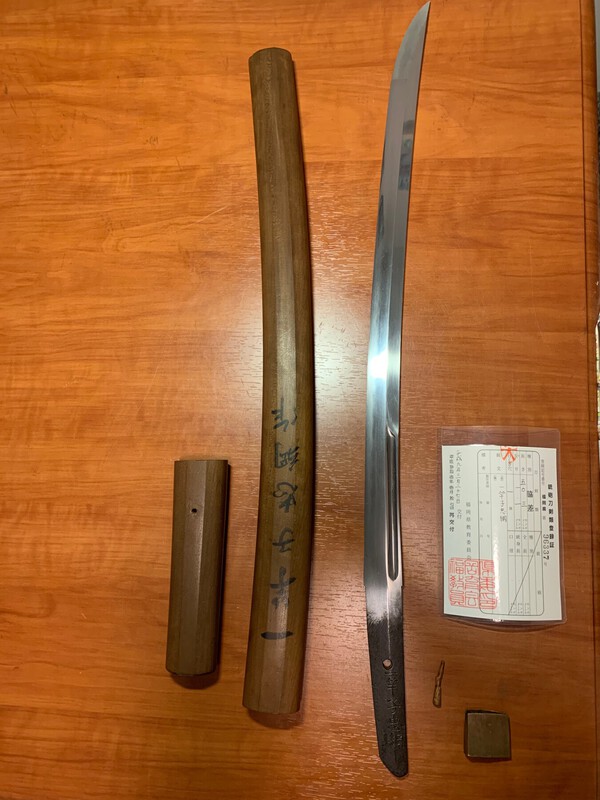


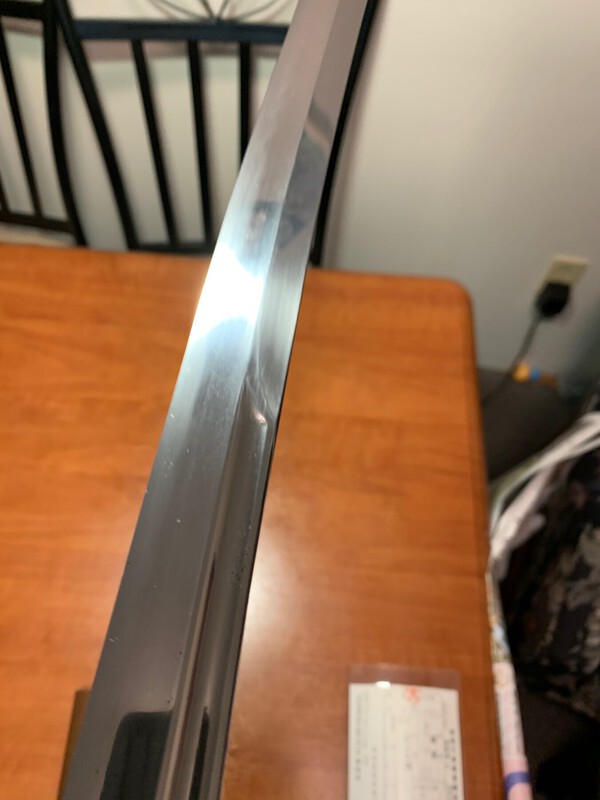


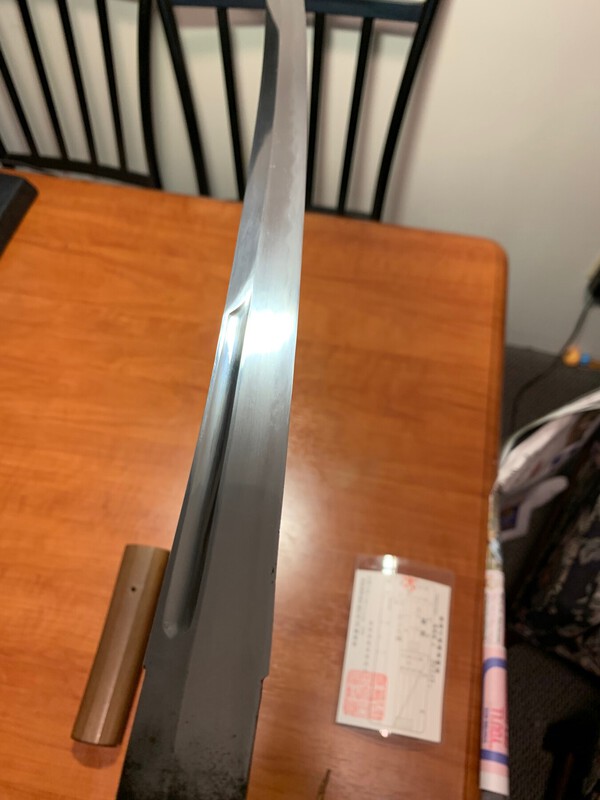

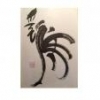

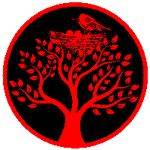




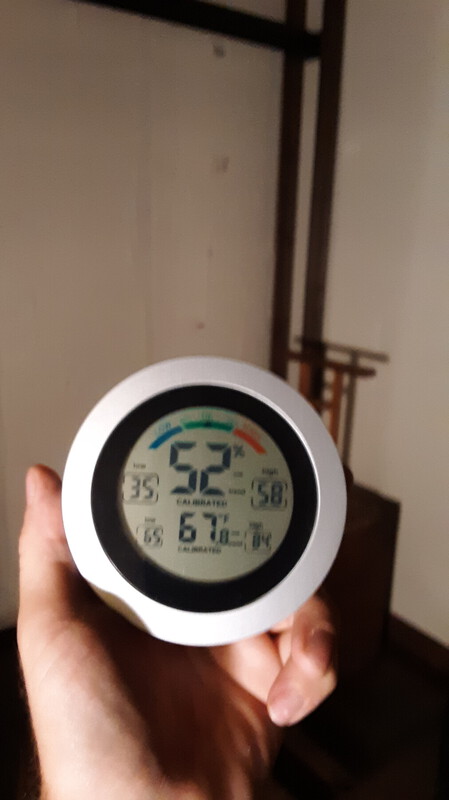
.thumb.jpg.bc10b59027a00aa142dce0349f3ba9e0.jpg)


